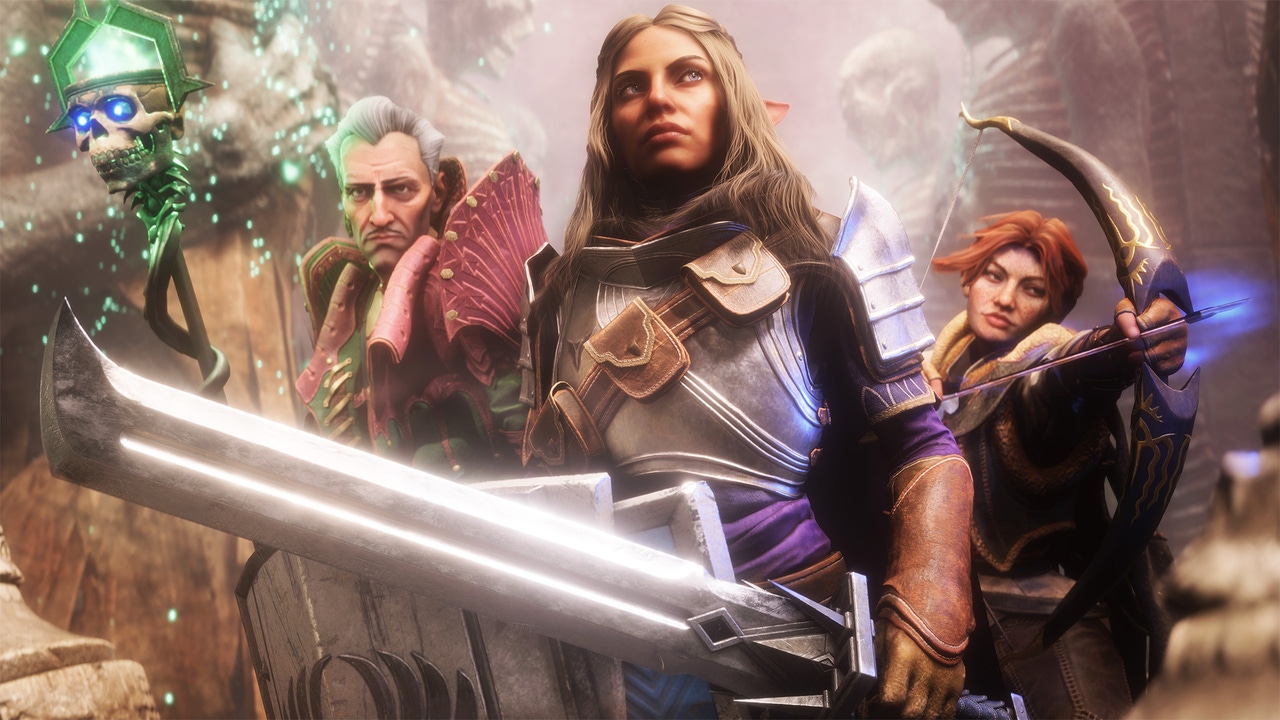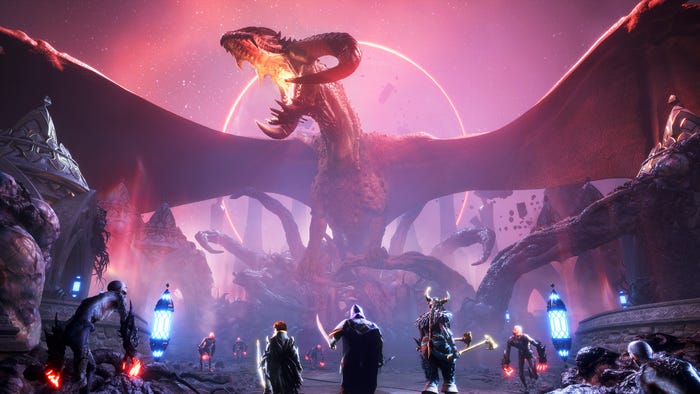Trending
Opinion: How will Project 2025 impact game developers?
The Heritage Foundation's manifesto for the possible next administration could do great harm to many, including large portions of the game development community.

With every entry from the Dragon Age series from developer BioWare, there usually comes a very different kind of experience in terms of tone and gameplay. While leaning very much into the high-fantasy role-playing experience from the developer's history on the Baldur's Gate and Neverwinter Nights series, Dragon Age plays with different fantasy styles while also placing an increasing amount of value into its merry band of evolving party members.
With Dragon Age: The Veilguard (formerly Dreadwolf), BioWare aims to revitalize the series by returning to a traditional high-fantasy role-playing game. It's a new Dragon Age that continues the series' trend of offering an escalating sense of high-fantasy political and social intrigue, yet still seeks to highlight BioWare's long-standing strengths when it comes to having a cast of compelling characters and deciding their fate. The game has been unveiled after layoffs at the studio and years of challenging—but seemingly not impossible—directional shifts.
At Summer Game Fest 2024, we saw an extended demo of The Veilguard's prologue, with commentary from creative director John Epler explaining BioWare's big focus on companion characters—a quiet return to the studio’s design roots.
Set after the events of Dragon Age: Inquisition, the next game sees the world of Thedas facing a new threat posed by Solas, a former ally now turned villain. Seeking to destroy the barrier between the ethereal Veil and the mortal realm to restore his people, Solas unleashes otherworldly forces. A new hero, referred to as Rook, teams with returning heroes Varric and Harding to form a new party to face these threats – which inevitably unearth a greater foe that seeks to destroy all life in the world.
According to Epler, The Veilguard in particular, focuses on the themes of choice and consequence, and that a world at its bleakest is still worth saving. Like other games in the series, it features a fully customizable protagonist with different backstories and cultural backgrounds (human, dwarf, elf, and qunari), giving a more comprehensive range of options to make the protagonist feel like a natural part of the world that's been plucked out of obscurity to become a hero.
This follows in BioWare’s tradition of making Dragon Age protagonists more of a blank slate for the player—an ambitious challenge given how much game content has to evolve around the player’s long string of choices – which are reflected in the BioWare standard dialogue wheel.

Image via BioWare/EA.
The strong cast of supporting characters in a BioWare game has been a staple for the developer. Epler stated that the developers were keen to lean into that with The Veilguard, which he says has the most developed companions and related storylines from any BioWare game.
"I've been on every Dragon Age game previously, and I think the biggest thing that Dragon Age: The Veilguard brings to the larger series experience is an even heavier and more deliberate focus on the companions," said Epler. "We've been saying that it's the most deliberately crafted companion experience we've ever done – each character is integral for you to save the world, and they each bring something to the table. These characters are important, and each will have their mission to see and learn more about them."
The extended demo's dramatic and action-focused opening offered a clear view of what kind of Dragon Age game The Veilguard will be, which sticks with the familiar mainstays of an ensemble BioWare RPG. However, the upcoming game also has a more stylized aesthetic and snappier gameplay compared to the more gritty and tactical pace of the original game and its sequels. It's an action-focused RPG, with the combat itself having a similar flow and pace to The Witcher games. However, Dragon Age's familiar tactical pause also makes a return, allowing players to carefully choose skills at your leisure.
Interestingly, while The Veilguard has a sharper narrative focus on the companions, combat still sticks solely to the protagonist, a contrast from the game’s earlier entries, which afforded the player more cross-party control. However, the game empowers players by allowing them to send commands to allies, strategically coordinating with the protagonist. This feature, reminiscent of Mass Effect's tactical commands, reminds players that these are separate characters with their own agency.

Image via BioWare/EA.
During one critical moment in the prologue, Rook had to choose which party member to accompany them in a plan to thwart Solas' spell while leaving one party member behind to hold off incoming monsters. It’s a decision that will shape how each party member views Rook in the adventure ahead.
Epler said that as with previous BioWare games, companions will also have a set of unique quests tied to their individual stories, which will branch out throughout the game. How you build your party and what choices players make will define the type of adventure Rook and his party will have, which Epler stated are all bespoke events outside of the critical path.
"One of the big things we wanted to do with The Veilguard is to have the entire game feel like a crafted and authored experience," said Epler in a post-presentation follow-up. "While the game does have a lot of content that's not part of the critical path, and the various side-missions, all of that is hand-crafted by the team."
This again alludes to a return to form for BioWare, which experimented with fewer hand-crafted set pieces in Anthem and Mass Effect: Andromeda. If it’s successful here, it’s an unfortunate rebuke of the studio’s directional shifts for its previous two games.
Dragon Age: The Veilguard looks more like a stylized grand adventure for the series that bolsters its cast of heroes, though we didn't quite get a look at how many of these choices will come into play when your party begins to explore Thedas during a chaotic period.
It has been interesting to see where BioWare is as a developer currently, and it's no secret that Dragon Age: The Veilguard has had trouble with development as various staff turnovers have extended dev time. That said, the upcoming game has intriguing flourishes and a tone that could be a nice pivot for the series.
With recent successes from other fantasy RPGs like Baldur's Gate 3 showing that building up a great cast and seeing them evolve with one another has a lot of value to a role-playing game, The Veilguard looks to be doing the smart thing by focusing on what BioWare has traditionally done best, and that's put its cast of characters in the spotlight.
It was interesting to see a far more stylized adventure-like tone for Dragon Age, which began its life as a dour, proper noun-laden adventure. The art direction and tone have now shifted to look a little bit more like the criminally underrated Marvel’s Guardians of the Galaxy.
But for every fresh choice you’ll find in Dragon Age: The Veilguard, it certainly seems like BioWare’s acknowledged it has to get back to what it does best, which is focusing on character-oriented adventures that the studio has built its legacy on.
You May Also Like